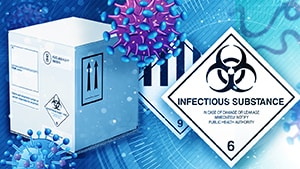Key points
- CDC primarily uses nucleic acid amplification tests to identify Mycoplasma pneumoniae.
- CDC tests specimens identified as positive for M. pneumoniae for macrolide susceptibility.
- CDC doesn't use culture or serological testing as routine diagnostic methods.
- CDC only accepts specimens from state public health laboratories and other federal agencies.

Specimen acceptance criteria
CDC only accepts certain specimen types for M. pneumoniae testing from public health laboratories and other federal agencies. Healthcare providers should contact the public health laboratory for their jurisdiction to arrange for specimen submission.
Public health laboratories can forward approved specimens to CDC for specialized testing.
Specimen, documentation, packaging, and shipping
Specimen requirements vary by the specific molecular detection test requested.
The following links provide information on specimen, documentation, packaging, and shipping requirements:
Common rejection criteria
CDC's laboratory most commonly rejects specimens for M. pneumoniae testing for the following reasons:
- Specimens stored, shipped, or received at incorrect temperatures.
- Improperly labeled specimens.
Specimen collection protocol
Healthcare providers may collect different respiratory specimen types depending on the test that will be performed. Some studies suggest that oropharyngeal swab may be better for detection of M. pneumoniae compared to nasopharyngeal swab.12 Adherence to proper specimen collection technique is important for accurate test results.
For oropharyngeal swab specimens
Insert swab into the posterior pharynx and tonsillar areas. Rub swab over both tonsillar pillars and posterior oropharynx and avoid touching the tongue, teeth, and gums.
For nasopharyngeal swab specimens
Insert flexible shaft swab through the nares parallel to the palate (not upwards) until it contacts the nasopharynx. Indications of contact include encountering resistance and the distance equaling that from the ear to the patient's nostril. Gently rub and roll the swab.
Resources
Unexplained respiratory disease outbreaks
Get additional information on investigating unexplained respiratory disease outbreaks.
- Leber AL, Oyeniran SJ, Wang H. Reduce severity of a multiplex commercial respiratory panel for detection of Mycoplasma pneumoniae is due to specimen type. J Clin Microbiol. 2024 Sep 10: e0113924. Online ahead of print.
- Kakuya F, Kinebuchi T, Okubo H, Matsuo K. Comparison of oropharyngeal and nasopharyngeal swab specimens for the detection of Mycoplasma pneumoniae in children with lower respiratory tract infection. J Pediatr. 2017;189:218–21.
